The High-Performance Cruiser - The New Wave of the Traditional Racer/Cruiser
It has been said that when two sailboats are side by side an unofficial race is declared. You grip the helm a little tighter, tweak the jib trim a smidge and before you know it, you are racing. It is the thrill of the moment that captures hold of you, your heart beats a little faster, you squint your eyes as you watch for the next puff. For many sailors this is inherent in their persona and it is what drives us back to the sea whenever we are on land.
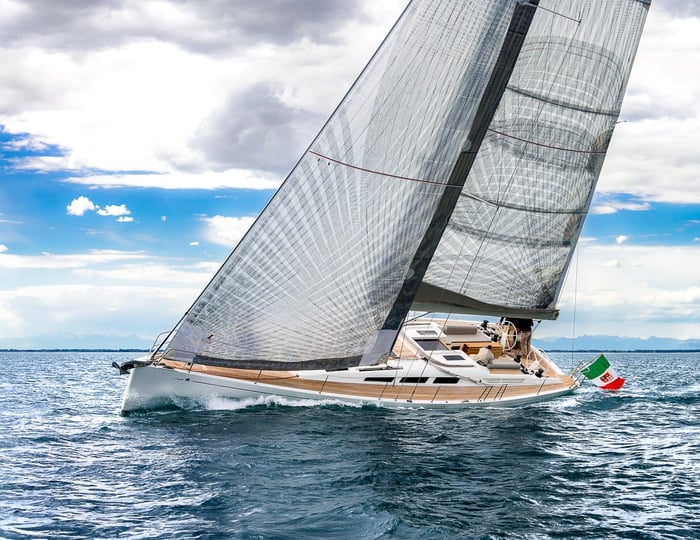
Italia Yachts 15.98 Bellissima
Virtually all modern yachts share some part of their design with racing yachts, and as such the evolution of the cruising yacht was born. Full keel, canoe body hulls have virtually disappeared in favor of the calculations in water line length, righting moment, sail design and many other factors. In a form of trickle-down economics today's basic cruising yacht is a more capable, faster, and sturdier yacht than the cutting edge racing yachts three decades ago. Manufacturers market their boats with a sense of speed, sleek designs, many now fitted with twin rudders and twin helms to give the boat that modern racing feel. About that last point, twin rudders is a racing yachts way of having less foil in the water when high speed reaching at planing/close to planing speeds as they can get the windward rudder out of the water and the leeward rudder is pointing almost straight down. This means less drag (half the rudder surface is in the water) and the faster you can go. So why do many of these modern cruising yachts have twin rudders? It’s for the shallower draft because these boats have chines to increase interior volume while trying to keep the wetted surface down (drag), but you will lose some speed compared to a single rudder as you never get the windward rudder out of the water on a 40’ production boat, it can’t go fast enough and your typical passengers don’t want the heel angle required that would spill your drinks. A single rudder would need to be much deeper because of the riding on the chine and the beam of the boat going upwind, and then all of sudden you’re drawing over 6’ in a 40’ modern cruiser. I do get a little chuckle when I see in the marketing brochures that it’s for “enhanced performance”. I could write a whole article on that, and I might, but I digress, back to the topic at hand.
In the year 2020 the era of the traditional (read slower) cruising yacht has all but disappeared except for a few shipyards, such as Island Packet and Pacific Seacraft. Gone are the iconic production lines like Valiant, Hans Christian, Baba, and many more. For better or for worse these yachts have been replaced by larger, faster designs with more space and systems than ever before. More and more of the general public are becoming boaters for the thrill of feeling the wind in their hair and the rush of moving through the water at speed.
Overlapping genoas, mast head rigs, full keels, skeg-hung rudders, solid fiberglass hulls have all but disappeared as well. To some this has been seen as a slight towards those that feel a more traditionally built yacht is sturdier and more resilient to damage. In some ways they are, in some ways they are not. It all depends on their use. What is true though is that more and more people want to get to their next destination with speed and equipped with the modern technology to get them there safely. Much of the worlds popular yachting destinations have been well charted and the capabilities of the yachts have gotten better. So traditional safety mechanisms such as the aforementioned skeg-hung rudders and full keels have taken a back seat to more speed and thrill.
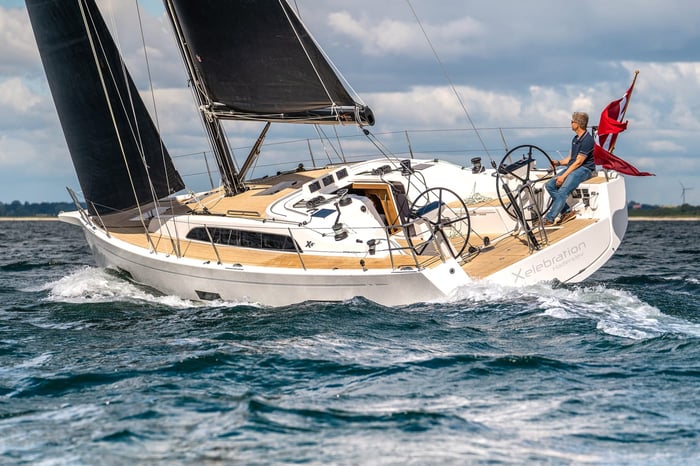
X-Yachts X4_0
The term “cruising yacht” in the traditional sense has become all but extinct save for those few manufacturers and their loyal followers, or custom designs that are built few and far between. Are these newer cruiser designs “racer/cruisers”? This was a term that became apparent in the 1980’s as more designs were launched as dual use boats. J Boats is probably the manufacturer that comes to mind for most. Johnstone designed boats that could be quick around the racecourse but also have the ability to sleep the crew aboard or light coastal cruising. The J Boat is built as a compromise, with an L-foot keel, racing deck layout with an elevated coach roof, a simple but functional cruising interior and adequate construction. This fit the niche of the large group of boaters that want to have a fast race boat and fun cruising yacht while also keeping the budget in line.
However, I would say the term “racer/cruiser” has transitioned into two new categories, one is the “performance cruiser”. Many more people are purchasing cruising yachts with performance characteristics, these boats are fast, faster than many of the traditional racer/cruiser designs from only 15 years ago. A racing sail plan with cruising amenities like a self-tacking jib and a Code Zero. The interiors are plusher and more welcoming, and the boats are built better. Boats from Beneteau, Jeanneau, Hanse, DuFour, Catalina, Hylas, Passport and many others now fill this performance cruiser category. It is the largest category of sailing yachts in the world. In every brochure you will see the words “speed and stability”, trust me it’s in there. That’s where the market has drifted towards and it is here to stay, the modern cruiser is a “performance cruiser”.
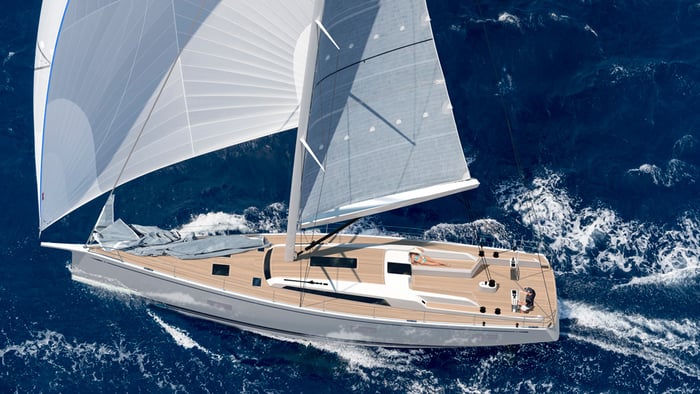
Nautor’s Swan 65
But what about those who want more? There’s always someone who wants something flashier, faster, higher quality, something made of the details. This is not your regular boater. They want something that is a true limited edition, like an Italian super car owner, they want to be different and feel like they own something special that is unique to them and their persona. They don’t want to have one of 20 of the same boat in the marina. So in the past decade the “high-performance cruiser” was born.
While not full on racing yachts, these designs are cruisers that do not compromise on anything. Carbon fiber construction, racing masts and rigging, torpedo-bulb keels and sleek aerodynamic decks. But step into the cockpit you see all the cruising amenities, and when you step below you are taken aback by interiors that are a step above everything else except for a custom yacht builder. These yachts have been built by European manufacturers for more than a decade and more recently are making their entry into the US. Of prominence are the brands Italia Yachts, X-Yachts and Dehler to name a few. Custom designers like Swan, Baltic, and Mylius have joined the fray as well. Much of what these builders put into their boats is cutting edge, taken right from the most modern racing designs and made into a cruising yacht.
Some of the “performance cruiser” builders have started to tickle in this market as well, such as the Beneteau First 53 launched last year. But those tend to be more of a sheep in wolfs clothing when compared to the cutting edge construction and quality put into this “high-performance” category. As has been seen with history these details will trickle down over time, so expect to see more and more builders attempt to enter this smaller but rapidly growing, market.
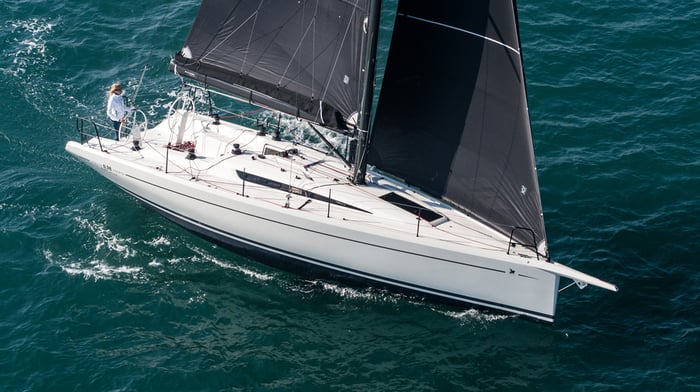
Italia Yachts 11.98 Bellissima
As the world evolves and so does sailing, will these high-performance cruisers become the everyday cruiser in 20 years? It will take a great increase in overall quality and details by the common production manufacturer to reach the level that these high-performance cruisers have attained. I’m not sure what will happen over the next 20 years as my crystal ball is out for repairs, but I can tell you that high-performance cruisers are here to stay, and they will make their mark on yachting history.
BY: ERIK HAALAND - Yacht Broker | Italia Yachts Sales Director
(410) 279-3027 Erik@DavidWaltersYachts.com
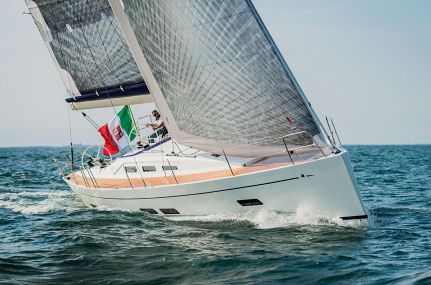



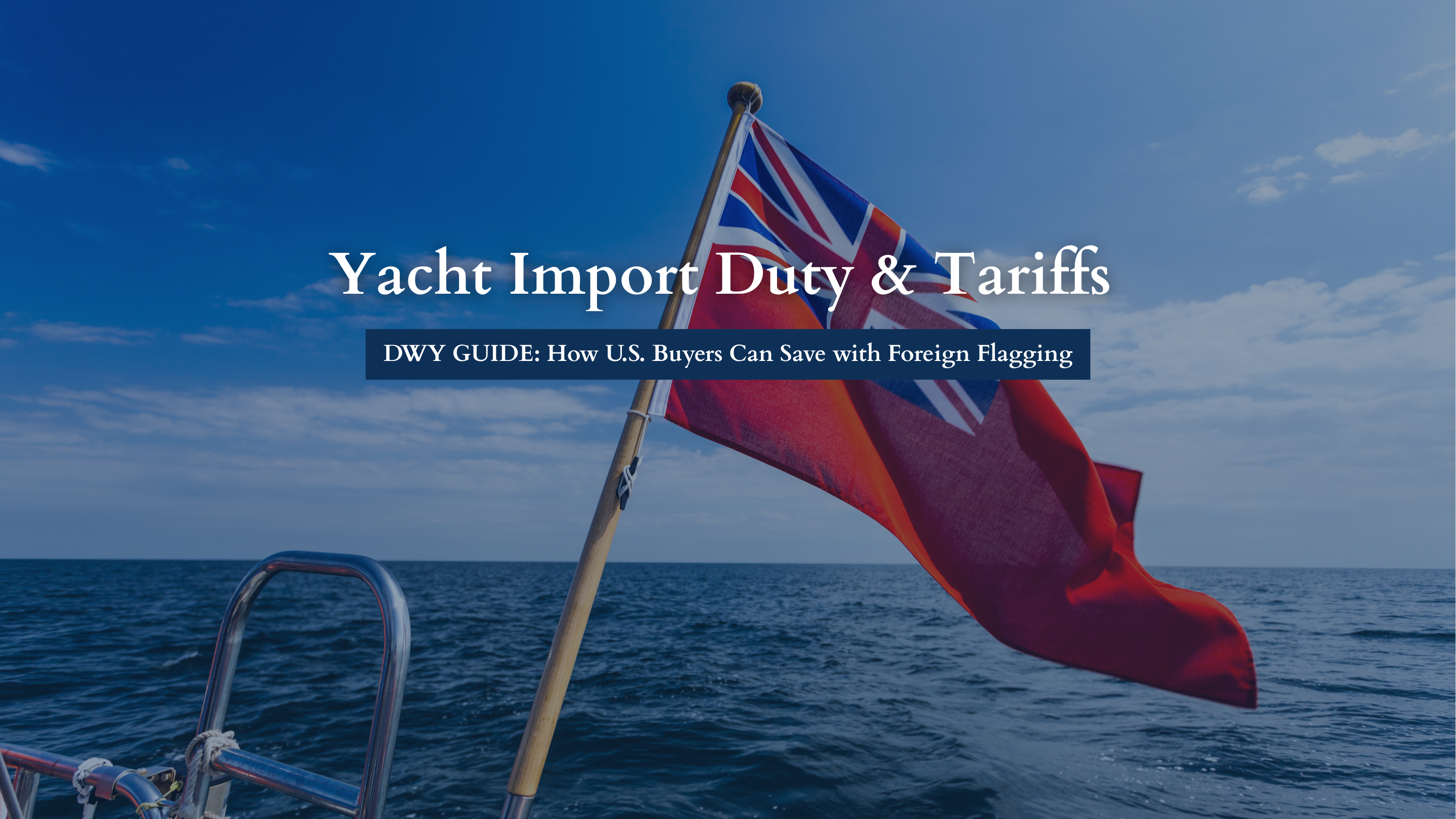




LEAVE A COMMENT